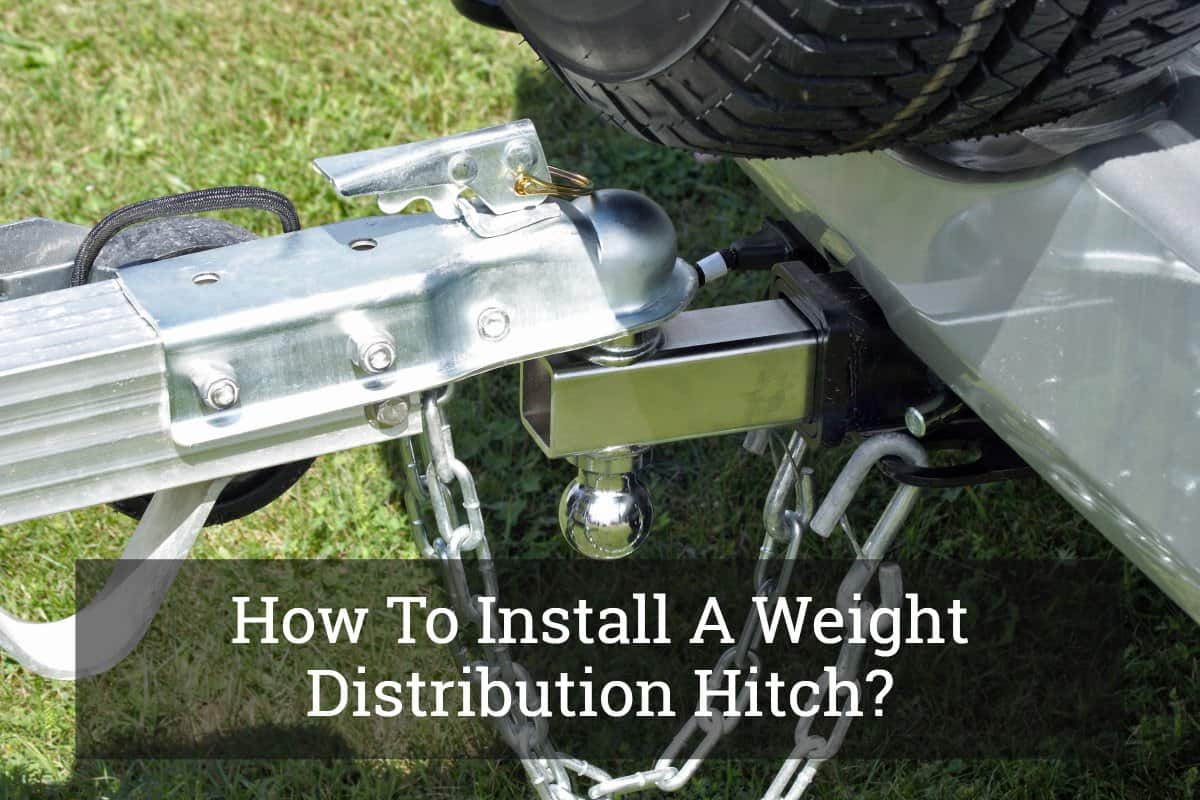Camping out in your RV with family and friends is always fun to do. However, there are RV enthusiasts who choose to have the conveniences and comfort of home while out on a vacation. You might want to catch the latest episodes of your favorite TV shows or catch a big game. To do these things, you have to get yourself an RV antenna. You can buy one that is designed to receive signals from local TV stations in your area.
In this article, we’re going to discuss the things you need to learn before you buy an RV antenna. We also have a rundown of the top four picks for the best RV antenna. We will provide you with each product’s key features, pros, and cons to help you come up with a better decision.
| Product (Amazon Links) | Brand | |
|---|---|---|
 | Winegard | Review |
 DISH VQ4450 Tailgater Bundle |
Dish | Review |
 Magnadyne RVTV-W2 Omni-Directional Amplified TV/AM/FM Antenna |
Magnadyne | Review |
 Winegard RZ-6000 Rayzar Z1 RV TV Antenna |
Winegard | Review |
What Is An RV Antenna?
An RV antenna is a streamlined and powerful receiver specifically created and designed for use on recreational vehicles. You can mount these antennas onto the roof of your RV so you can maximize the reception. Some can be folded down but can be extended up to several feet to get rid of any signal obstructions. An RV antenna features a durable housing that protects the antenna from ultraviolet rays and other external elements.
One thing to take note is that the driver must not be distracted by the show. An RV antenna can also be mounted indoors and can be attached to any RV window. These are thinner, take little space and installation is easy. A good RV antenna should give you plenty of shows to view during short and long camping trips.
Top Picks for the Best RV Antenna
Below are the four best products that you might want to take into consideration.
1. Winegard SK-SWM3 DIRECTV TRAVELER RV Satellite System
AD
The Winegard RV Satellite System is the only RV antenna that is compatible with DIRECTV high-definition programming. It has the capability of receiving programming coming from more than one satellite at a time. This will be very beneficial for RVs with more than one television. It is also very easy to operate using one button on/off. In addition, this is also great to use with DVRs.
Main Product Features:
- Product Dimensions: 46 x 27 x 13.8 inches
- Item Weight: 53 pounds
- DVR capabilities
- Roof installation is required
- Manufacturer offers warranty on parts
Pros:
- Easy to use and install
- Receives DIRECTV HD programming including the Genie
- Durable
Cons:
- A little heavy
- Requires roof installation
2. DISH VQ4450 Tailgater Bundle
AD
With the DISH Tailgater bundle, you can enjoy HDTV wherever you go. It consists of a portable satellite TV antenna and the DISH Wally HD satellite receiver. This RV antenna is designed for use of outdoor and sporting enthusiasts. The DISH RV antenna has an automatic aiming antenna and is very easy to operate. In addition, it has WiFi capabilities that let you enjoy audio and video streaming.
Main Product Features:
- Number of Receiver Outputs: 2
- HD and SD capable
- Product Dimensions: 17 x 13.5 x 18.8 inches
- Item Weight: 8 pounds
- Batteries: 4 AA batteries included
Pros:
- Portable
- WIFI capabilities
- Easy to use
- No remote or power source is required
Cons:
- May not endure harsh weather
- A lot of users complained about its low quality
3. Magnadyne RVTV-W2 Omni-Directional Amplified TV/AM/FM Antenna
AD
The Magnadyne RV Antenna can receive signals from all directions. It can pull in all the TV shows you love and is free for life. This also has a sturdy mount that is wind-resistant. It is very easy to install with the help of the accessories included in the package. You just have to unwrap the bundle, plug it in, and scan the channels.
Main Product Features:
- Item weight: 4.5 pounds
- Product Dimensions: 12 x 8 inches
- Power Supply: 12 Volts
- Shape: Round
- Weatherproof and UV-protected
Pros:
- Easy to use and install
- Comes with a built-in amplifier
- Free HD programs for life
- Features outstanding wind resistance
Cons:
- May not pick up channels in remote areas
- May not get good reception
4. Winegard RZ-6000 Rayzar Z1 RV TV Antenna
AD
The Winegard RV Antenna picks up 4K UHD signals and can pick up VHF and UHF. When you don’t want to pay for satellite, this is the perfect solution. It supports VHF and UHF frequencies. Housing is made of waterproof and durable materials that can withstand rain and wind. It features a signal that is amplified for your RV.
Main Product Features:
- Product Dimensions: 16.25 x 14.7 x 8.4 inches
- Item Weight: 2.5 pounds
- Frequencies supported: VHF, UHF
- Minimal footprint
Pros:
- Durable
- Housing is UV and water-resistant
- Lightweight
- Amplified
Cons:
- Might not get long-range signals
- Other antennas may have better signal
What are the Different Types of RV Antennas?
Before buying an RV antenna, it is vital that you familiarize yourself with the different types and how one is better than the other.
- Outdoor RV Antenna: This will be more effective in picking up local stations in your area. Just make sure that you can lower it, especially when driving. You don’t want your antenna to be caught in a tree on your way to your campsite. Once you get to your destination, you can just extend the antenna back up to get better reception.
- Indoor RV Antenna: This has less range compared to the outdoor RV antenna. One great advantage of having one is that it can stay in its place permanently. You won’t have to adjust it or take it out to the roof every time you need to use it. In addition, angling to a specific direction is not necessary if you have an indoor RV antenna.
What are the Benefits of Having the Best RV Antenna?
If you are an RV enthusiast and you have a TV that isn’t used to watch your local shows, you might be missing a lot. Some of you might think that this is not a necessity but in reality, its benefits can outweigh the expense. With this, below are some of the reasons to get the best RV antenna.
AD
1. You can enjoy the convenience of home even while on the road.
Even if you are away from home, you can enjoy your favorite shows if you have an RV antenna. You won’t have to miss an episode of the shows you love. Some models offer WIFI capabilities and it lets you connect to the Internet even while on the move. You may read blogs, watch a big game, or even stream videos while at the campsite.
2. You can receive local TV shows in HD.
You won’t need any subscriptions if you want to watch local TV shows. The great thing about having an RV antenna is that you can get them for free. One-time payment for an antenna lets you enjoy your shows free for life. In addition, it also offers HD versions of local channels.
How to Choose the Best RV Antenna
With a lot of options available in the market right now, which one is the best buy? Allow us to make decision-making a lot easier for you. Below are some of the important things you need to take into consideration before buying one.
- Signal Reception: You might want to question the distance of the transmitter to the RV antenna, as well as its location. Once you figure them out, you can decide on where to place your RV antenna. Ultimately, this will help you decide if you want to get an outdoor or an indoor-type RV antenna.
- Installation: The best way to install an RV antenna is to keep it away from obstructions. It should also be positioned to face broadcasting towers. You have the option to choose the one that you can easily manipulate with regard to getting a better TV reception.
- Material: Most RV antennas are made from aluminum and plastic. These materials make your RV antenna easy to break, especially when you leave it outside. If you have the budget to replace it right away after it breaks, you may get an outdoor antenna. This is where the advantage of having an indoor RV antenna comes.
- HDTV Antenna: Having a high-definition RV antenna is necessary if you want to watch HD programs. In order to save money, you must first check if the TV is compatible with HDTV RV antennas. Almost all TV stations now offer HD signals to ensure that you don’t miss an episode.
- Mounting Locations: RV antennas can be mounted on several locations, including the RV’s roof, hood channel, bumper, and mirror bars. Each one of them has its own advantages and disadvantages, so you have to be sure that the one you buy is easy to manipulate.
- WIFI Capability: Some models now offer WIFI capabilities that let you enjoy the use of the Internet even while on the road. This will be very beneficial, especially if you want to have streaming subscriptions such as NETFLIX and AMAZON streaming services.
- Price: Another thing to consider is the RV antenna’s price. Cheaper ones might make you think they are of lower quality than the other expensive models. This might not be true at all times. You just have to review each product’s features, pros, and cons so you can apply its price before making the final decision.
- Item Weight: This might also be a factor if you want a lightweight RV antenna. The only downside of this is that it may not endure strong winds. You have to choose one that can withstand harsh weather and is durable.
Conclusion
By this time, we hope that it’s a lot easier for you to make a decision in choosing the best RV antenna. If you were having a hard time choosing, just review each product’s key features, pros, and cons to narrow down your options. If you know the features you want in your RV antenna, then it should be easy for you.
BDo you need more products to hook up your RV with? Click here to learn more about the options available in the market right now.


























